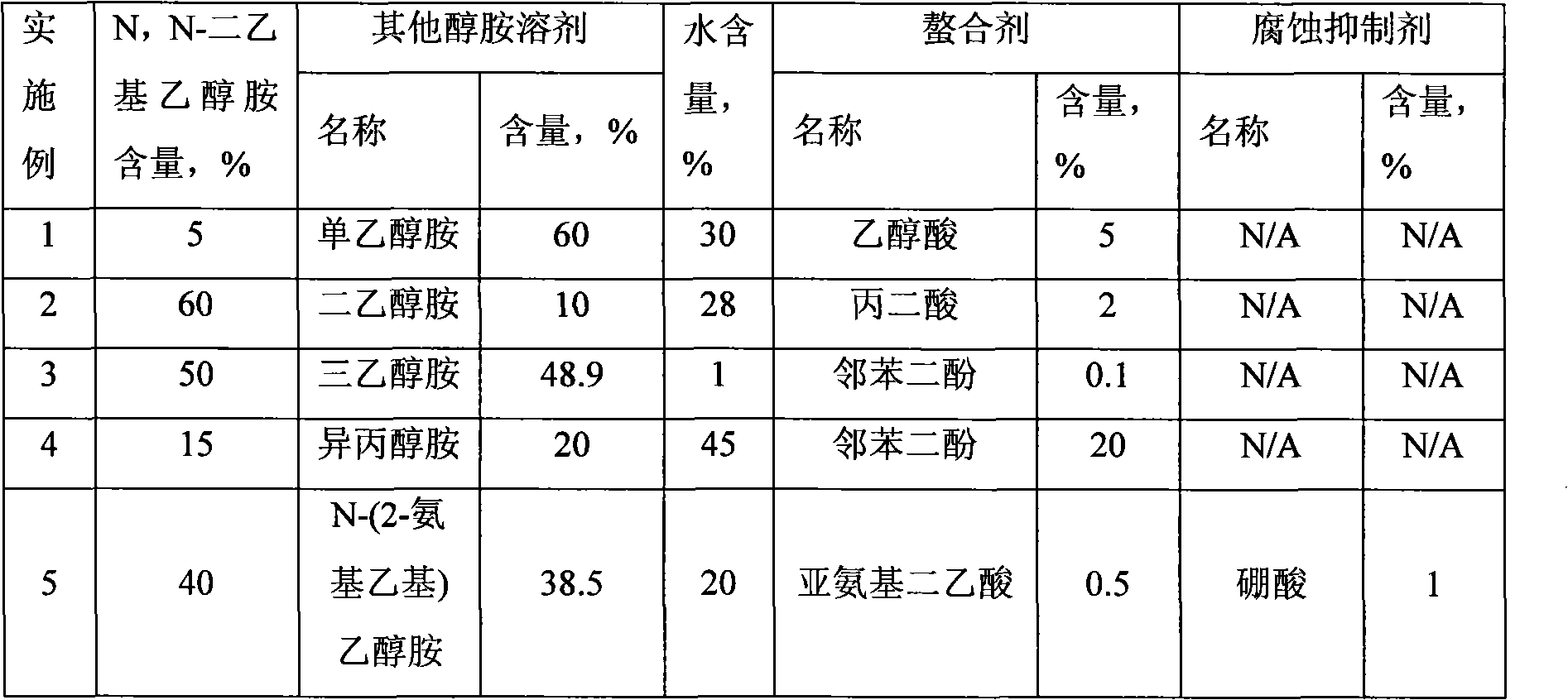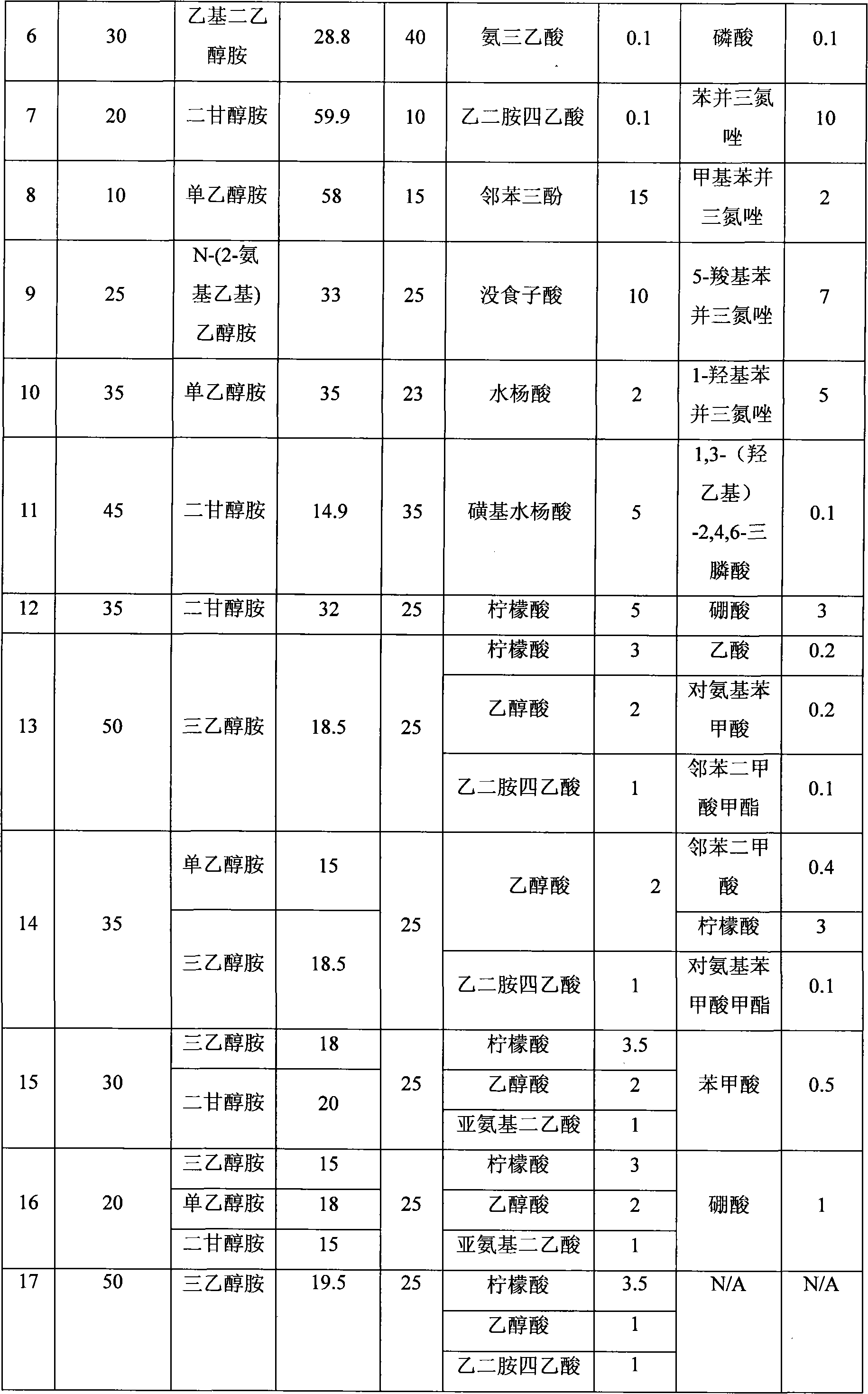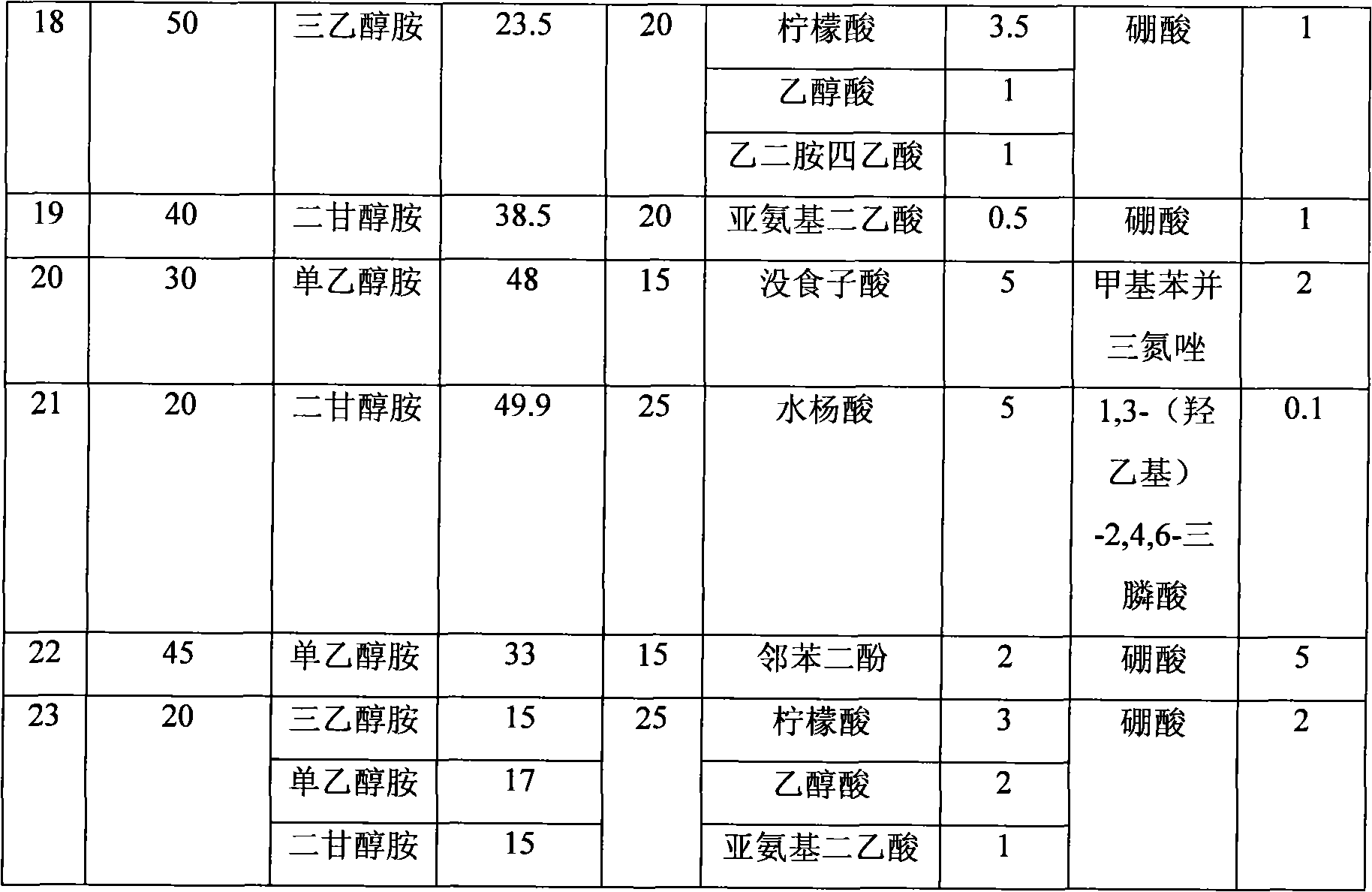Cleanout fluid for removing photoresist layer residue
A cleaning liquid and residue technology, applied in the field of cleaning liquid, can solve the problems of reducing the cost of raw materials, quartz corrosion and corrosion, and reducing the corrosion rate, so as to achieve the effect of saving costs, solving a single source and a small corrosion rate
Active Publication Date: 2010-03-31
ANJI MICROELECTRONICS (SHANGHAI) CO LTD
View PDF7 Cites 5 Cited by
- Summary
- Abstract
- Description
- Claims
- Application Information
AI Technical Summary
Problems solved by technology
After continuous improvement, the corrosion rate of the solution itself to metal aluminum has been greatly reduced. However, because this type of cleaning solution uses hydroxylamine, and hydroxylamine has the problems of single source, explosion and high price, it is necessary to reduce the cost of raw materials
Although the existing fluoride-based cleaning solutions have been greatly improved, such as US5,972,862, US 6,828,289, etc., there are still problems that cannot control the corrosion of metal and non-metallic substrates well at the same time, and it is easy to cause the characteristic size of the channel after cleaning. On the other hand, because the wet cleaning equipment in some mainstream semiconductor companies is made of quartz, and the fluorine-containing cleaning solution corrodes the quartz and the corrosion intensifies with the increase of temperature, so there is a difference with the existing quartz equipment. Incompatibility issues affect its widespread use
Method used
the structure of the environmentally friendly knitted fabric provided by the present invention; figure 2 Flow chart of the yarn wrapping machine for environmentally friendly knitted fabrics and storage devices; image 3 Is the parameter map of the yarn covering machine
View moreImage
Smart Image Click on the blue labels to locate them in the text.
Smart ImageViewing Examples
Examples
Experimental program
Comparison scheme
Effect test
Embodiment 1~23
[0016] Table 1 shows the formulations of Examples 1-23 of the present invention, and the cleaning solution of the present invention can be obtained by simply mixing the components in each example.
[0017] Embodiment 1~23 formula of the present invention of table 1
[0018]
[0019]
[0020]
the structure of the environmentally friendly knitted fabric provided by the present invention; figure 2 Flow chart of the yarn wrapping machine for environmentally friendly knitted fabrics and storage devices; image 3 Is the parameter map of the yarn covering machine
Login to View More PUM
 Login to View More
Login to View More Abstract
The invention discloses a cleanout fluid for removing photoresist layer residue, which is characterized by containing N,N-diethylethanolamine, other hydramine solvents, water and chelating agent. The cleanout fluid has low corrosion rate to nonmetal and metal and can remove photoresist residues on wafers. Therefore, the novel cleanout fluid has favourable application prospect in the field of micro-electronics, such as metal cleaning, semiconductor chip cleaning and the like.
Description
technical field [0001] The invention relates to a cleaning solution in a semiconductor manufacturing process, in particular to a cleaning solution for removing photoresist layer residues. Background technique [0002] In the manufacturing process of semiconductor components, the coating, exposure and imaging of photoresist layers are necessary process steps for the pattern manufacturing of components. Residues of photoresist material need to be completely removed at the end of patterning (ie, after photoresist coating, imaging, ion implantation, and etching) before proceeding to the next process step. Ion bombardment during the doping step hardens the photoresist polymer, thus making the photoresist less soluble and thus more difficult to remove. To date, a two-step process (dry ashing and wet etching) has generally been used in the semiconductor manufacturing industry to remove this photoresist film. The first step is to remove most of the photoresist layer (PR) by dry as...
Claims
the structure of the environmentally friendly knitted fabric provided by the present invention; figure 2 Flow chart of the yarn wrapping machine for environmentally friendly knitted fabrics and storage devices; image 3 Is the parameter map of the yarn covering machine
Login to View More Application Information
Patent Timeline
 Login to View More
Login to View More IPC IPC(8): G03F7/42
CPCC11D7/3209C23G1/06G03F7/425C11D7/3218C11D11/0047H01L21/02068H01L21/31133C11D2111/22
Inventor 刘兵彭洪修彭杏于昊
Owner ANJI MICROELECTRONICS (SHANGHAI) CO LTD
Features
- R&D
- Intellectual Property
- Life Sciences
- Materials
- Tech Scout
Why Patsnap Eureka
- Unparalleled Data Quality
- Higher Quality Content
- 60% Fewer Hallucinations
Social media
Patsnap Eureka Blog
Learn More Browse by: Latest US Patents, China's latest patents, Technical Efficacy Thesaurus, Application Domain, Technology Topic, Popular Technical Reports.
© 2025 PatSnap. All rights reserved.Legal|Privacy policy|Modern Slavery Act Transparency Statement|Sitemap|About US| Contact US: help@patsnap.com



